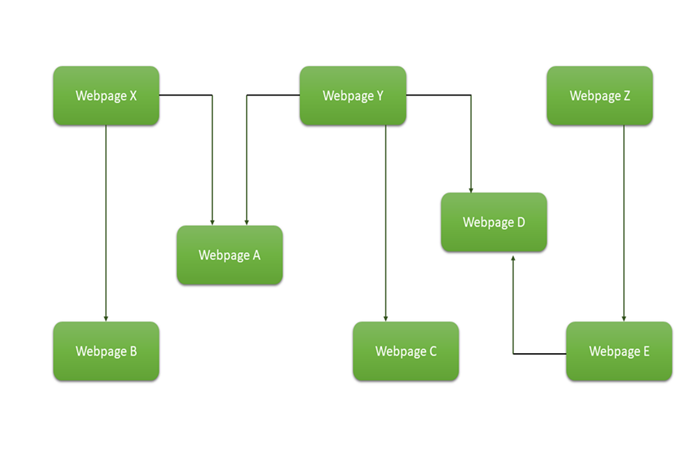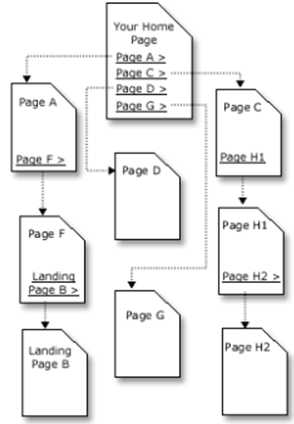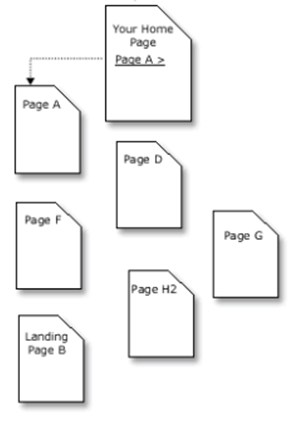
- SEO - Home
- SEO - What is SEO?
- SEO - Tactics & Methods
- SEO - On Page Techniques
- SEO - Off Page Techniques
- SEO - Web Site Domain
- SEO - Relevant Filenames
- SEO - Design & Layout
- SEO - Optimized Keywords
- SEO - Long-tail Keywords
- SEO - Title Tags
- SEO - Meta Description
- SEO - Optimized Metatags
- SEO - Optimize for Google
- SEO - Robots.txt
- SEO - URL Structure
- SEO - Headings
- SEO - Redirects
- SEO - Authority & Trust
- SEO - PDF Files
- SEO - Optimized Anchor
- SEO - Optimize Images
- SEO - Duplicate Content
- SEO - Meta Robots Tag
- SEO - Nofollow Links
- SEO - XML Sitemap
- SEO - Canonical URL
- SEO - Role of UI/UX
- SEO - Keyword Gap Analysis
- SEO - Get Quality Backlinks
- SEO - Adding Schema Markup
- SEO - Author Authority
- SEO - Fix Broken Links
- SEO - Internal Page Linking
- SEO - Clean Up Toxic Links
- SEO - Earn Authority Backlinks
- SEO - Core Web Vitals
- SEO - Update Old Content
- SEO - Fill Content Gaps
- SEO - Link Building
- SEO - Featured Snippets
- SEO - Remove URLS from Google
- SEO - Content is the King
- SEO - Verifying Web Site
- SEO - Multiple Media Types
- SEO - Google Passage Ranking
- SEO - Maximize Social Shares
- SEO - First Link Priority Rule
- SEO - Optimize Page Load Time
- SEO - Hiring an Expert
- SEO - Learn EAT Principle
- SEO - Mobile SEO Techniques
- SEO - Avoid Negative Tactics
- SEO - Misc Techniques
- SEO - Continuous Site Audit
- SEO - Summary
- SEO Useful Resources
- SEO - Quick Guide
- SEO - Useful Resources
- SEO - Discussion
SEO - Internal Page Linking
Internal links are essential to an effective SEO strategy and apply to every website page. It enables consumers to browse your website's content. It also provides search engine crawlers with details on the website'sfunctionality. To optimise your material for SEO, you must first grasp how internal links function, where to position them, and why they are essential. This post will go over internal linking and best practices.
What is Internal Page linking?
Internal linking is the SEO practice of building hyperlinks from one page to another on your site, i.e., links from one page to another in a single domain. Internal links aid users and search engines by creating a hierarchy of significance for your pages, simplifying navigation, and providing information about your content.
Sample code −
<a ref="http://www.tutorialspoint.com/" title="Example Text">Example Reference Text</a>
Comparing Internal And External Links
The differences between internal and external linking are as follows −
| Internal linking | External linking |
|---|---|
| 1. Internal links point to another webpage on the same website. | 1. External links on a website's page lead to another website. |
| 2. Internal links assist search engines in identifying the relationships between your website's pages. They also aid in the navigation of your website. | 2. External links boost your site's link popularity. This is one of the elements used by search engine algorithms to rank websites. |
Multiple Kinds Of Internal Links
You most certainly have a variety of internal links on your site at the moment. Understanding their peculiarities is critical since they play a vital role in the journey of your website visitors.
Navigation Links: Internal links in your main navigation menu are the most crucial on your website. These are permanent components of your website's header that communicate your website's hierarchy to users. They are most commonly organised around product categories, central services, or critical topic areas. Footer and sidebars are also included in navigation links.
In-text links: In-text links reside within the text of a website. In-text internal links refer to pertinent data the user may consult rather than signalling importance or navigation.

Benefits of Internal Page Linking
Investing the effort to establish internal links to your website's pages has several advantages. Let's look at how they can assist you in boosting your SEO strategy.
User experience and navigation: Internal links to your website make it a better user environment.
It makes it easy for visitors to travel across your website and quickly locate what they are searching for, maintains a great user experience and enhances the user journey.
Users are less inclined to visit another site. That means more page views and longer page sessions. As long as your CTAs and conversion activities are optimised, a more extended stay on the page offers more opportunities for the visitor to convert.
A plethora of internal links to thorough, superior blog pieces can also help elevate your brand's industry knowledge in users' minds.
As a result, it sends a message to Google indicating that users are discovering the information they are looking for and that the material must be worthwhile.
Using internal page links tospeedup crawling & indexing: Internal links also help Google uncover additional web pages on your site. Google wishes to display just the best material in search results.
Internal links inform Google about what pages on the site you value the most.
Algorithms are more inclined to include them in Search Results when crawled and indexed by search engine crawlers.
Any web page on the site is supposed to be accessible from the homepage with just three clicks or fewer.
Distribute link equity between pages: PageRank is a Google proprietary metric that measures the recognition of a web page based on the total number of links referring to it.
Internal links also aid in the distribution of PageRank throughout our domains.
When a web page links to yet another, it passes on an amount of its PageRank, or link equity.
Google's ranking system incorporates PageRank, and the higher the PageRank, the greater the probability of positioning well in the SERPs.

Best Internal Page Linking Practices
The following are the best internal linking tactics to maximise links' influence on your website's search engine performance.
Use Structural and contextual internal links: Both links are located within the textof content on a website.
Internal structural links strengthen the website architecture.
Contextual internal links can bemore effectiveon-site SEO since they assist search engine crawlers in determining the relevance and credibility of a web page in the context of a topic.
Set up significant and limited internal links: While there is no ideal amount of internal links you must use per page, remember that the greater the number of hyperlinks within the material, the lesser effect each one tends to have.
Looking at internal linksin each sentence from a user's standpoint is aesthetically perplexing and displeasing.
It could require the user hours to read one of your blog entries if they had to refer to the numerousinternal links you've included.
Prevent Using Common Internal Links: Internal links like "click here" or "read more" are best avoided because they don't give search engine crawlers or your readers any context about the article's subject.
Use keyword-rich anchor text: Choose three to four relevant keywords for a web page. These keywords should match the search phrases for optimising the intended page using on-page SEO.
Avoid using identical anchor text: When several web pages on a single domain include internal links using the exact keyphrase, search engine crawlers need clarification about which URL should be accurately crawled and ranked for that keyword phrase.
Using Dofollow links: Dofollow is a robot search directive that instructs Google crawlers to follow rather than disregard the links on the page. Internal links must be dofollow to pass on PageRank.
You might apply the nofollow tag on pages without ranking, such as "Thank you" or verification pages.
Link to recent posts in older posts: You should also include internal links in earlier posts to any new blogs you write. Google cannot find an article if there aren't any links directing to it, and this is a terrific strategy to increase the visibility of yourcontent.
Avoid creating links from images: Always aim to link from written information rather than images wherever possible. Compared to text links, a visual link won't offer sufficient context to Google or the user.

Conclusion
Lastly, your internal linking approach is vital for your SEO success. Therefore, you should pay attention to it. Internal, well-optimised links enhance your results and help you acquire more visitors from purchase-ready keywords. Similarly, they increase your website's engagement rates because consumers consider them valuable and continue to read your material.